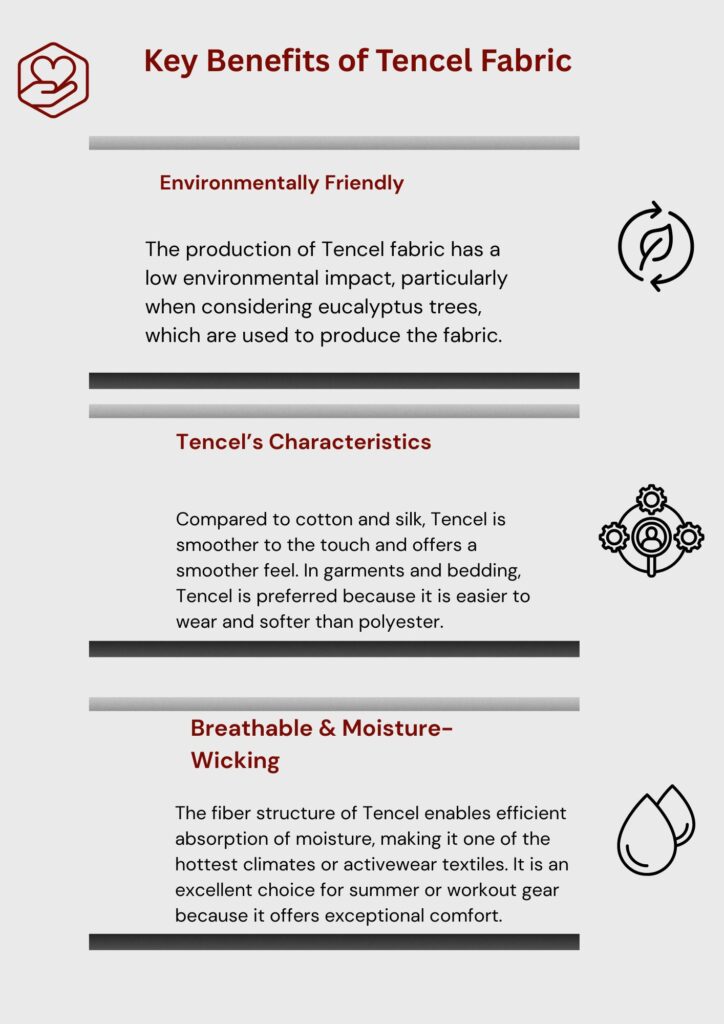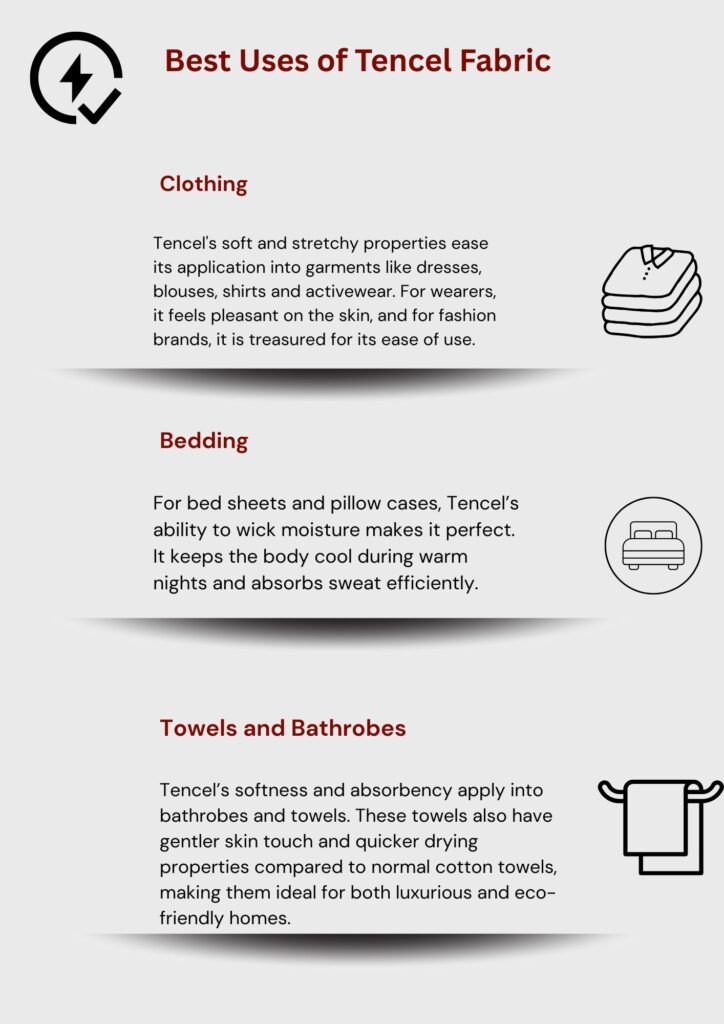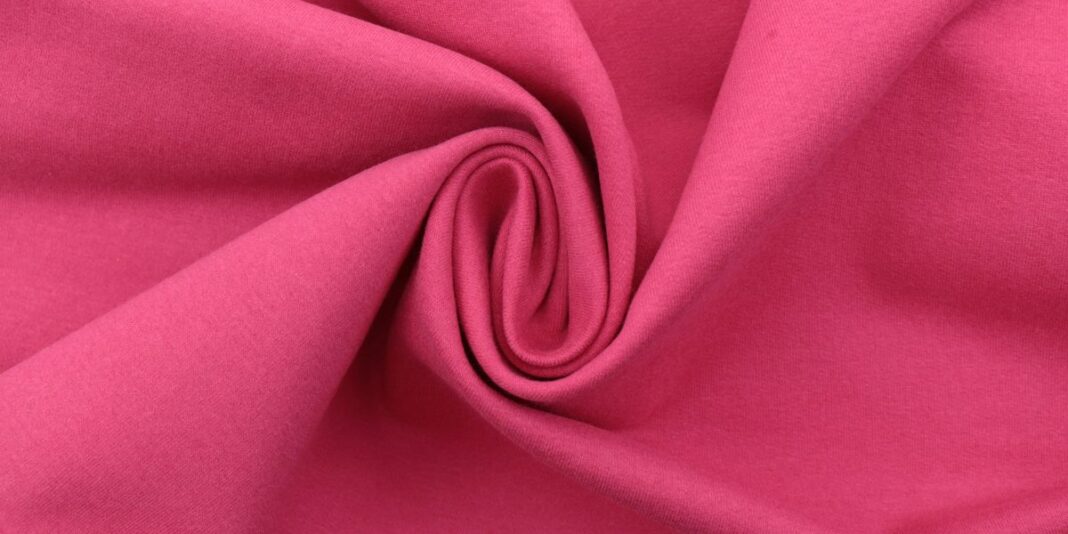Introduction
The Tencel (or lyocell) – a form of synthetic textile produced from wood pulp – has become extremely popular recently in the market, and this is due to the sustainability boom among people and corporations. This breathable and smooth material not only comes with environmental advantages but also offers a plethora of soft features. It is also worth noting that textiles made out of Tencel fibers are gaining traction due to the growth of environmentally conscious consumers.
Let us further explore the reasons behind Tencel’s popularity in sustainable fabric production.
What is Tencel?
Tencel or the lyocell fabric can nowadays be found in T-shirts and other casuals. The main ingredient of the Eucalyptus, Spendrix and Beeches trees, also provides renewability and fast recovery. Added on is Lenzing AG’s efforts to keep their product Tencel as Eco-friendly one of the leading textiles. Besides, the fibers are 100% compostable and biodegradable making it a great substitute for synthetic textiles.
Due to Tencel’s origin and fibers being natural, its surface is smooth treated.
What is Tencel?
Tencel’s production methods incorporate closed-loop processes where more than 99% of water and solvents are reused.
Tree pulps are spun into fibers and are dissolved using non-toxic solvents. This method is energy efficient and minimizes waste, alongside the fact that the trees are sourced from sustainably managed forests.
Tencel does not require the use of pesticides like in the case of cotton, making it far more environmentally friendly.
Why is it Gaining Popularity?
More individuals nowadays recognize how their habits affect the earth, Tencel is a top performer in its category, meeting eco-conscious requirements while offering quality fabrication and comfort. Designers and consumers alike are enjoying effortless Tencel, easily masking its substantial sustainability assets behind exceptional quality.
Tencel fabric supports sustainability and ethical choices, positively contributing to its rising star.
Key Benefits of Tencel Fabric

Environmentally Friendly
The production of Tencel fabric has a low environmental impact, particularly when considering eucalyptus trees, which are used to produce the fabric. Benefits of Tencel Fabric Eucalyptus does not need extra care, such as pesticides or irrigation. Furthermore, Tencel uses a closed-loop system, and its production is water-efficient compared to cotton. Because of this, the system does not release harmful chemicals into the environment.
In summary, the fabric supplied fulfills both luxurious and performance standards without damaging the environment.
Tencel’s Characteristics
Compared to cotton and silk, Tencel is smoother to the touch and offers a smoother feel. In garments and bedding, Tencel is preferred because it is easier to wear and softer than polyester. People with sensitive skin will prefer Tencel because the smooth fibers cause minimal friction and skin contact.Benefits of Tencel Fabric
Thus, people will look for Tencel in premium bed linens and high-end garments.
Breathable & Moisture-Wicking
The fiber structure of Tencel enables efficient absorption of moisture, making it one of the hottest climates or activewear textiles. It is an excellent choice for summer or workout gear because it offers exceptional comfort. Most importantly, Tencel comfort is reliable and enduring.
Breathability also prevents bacterial growth, making garments fresher for wear for extended periods.
Hypoallergenic & Gentle on Skin
The processing of Tencel makes it smooth and hypoallergenic while also gentle on skin, making it safe for people with eczema or other allergies. Severe dyes and softeners that are harmful to skin are not used, Benefits of Tencel Fabric allowing Tencel to be safely worn by babies and those suffering from sensitive skin.
With Tencel, one can experience peace of mind with softness.
Durable & Long-Lasting
While Tencel appears delicate, it is surprisingly resilient. Its strength helps withstand regular washing. Additionally, its resistance to pilling surpasses that of cotton or bamboo. The shape, color, and feel of Tencel clothing and linens is retained over time. This durability reduces replacement and waste.
Overall, Tencel is an investment in durability, sustainability, and quality.
Fights Bacteria and Odors
As a result of its moisture-wicking advantages, Tencel is odor resistant. For instance, it is well-suited for socks, gym clothes, and other apparel that is likely to harbor odors. You will no longer need to worry about smell even during rigorous workouts. Its natural fibers inhibit the growth of bacteria without the need for chemical treatments.Benefits of Tencel Fabric
This innovation provides a more hygienic option.
Fights Bacteria and Odors
Tencel looks after wrinkles more than linen and silk which means less time spent ironing. Also, washing on gentle cycles is not a problem and it dries quickly. Unlike many other delicate fabrics, ryecute It is easier to take care of them wear than a modern lifestyle.
The care is as low-maintenance as Tencel’s list of benefits grows.
Tencel vs. Other Fabrics
Tencel vs. Cotton
In terms of sustainability, Tencel outperforms cotton by a longshot. The growing of cotton plants consumes vast amounts of water, pesticides, and herbicides in comparison to Tencel, which is cultivated in an eco-friendly manner. Furthermore, Tencel is softer than cotton and absorbs moisture better, making it more suitable for activewear and beds.
To summarize, Tencel provides comfort without the ecological consequences.
Tencel vs. Bamboo
Bamboo fabric tencel is marketed as eco-friendly but its production uses harsh chemicals. Tencel’s closed-loop method is more eco-safe and offers better breathability and comfort in warm conditions. For eco-conscious buyers, it is the safer and more breathable alternative.
Tencel vs. Polyester
While polyester has advantages of being cheap and durable, it lacks comfort and breathability. It is also non-biodegradable, and made from petroleum-based products. In contrast, Tencel is natural, biodegradable, and more comfortable to wear.
Choosing Tencel helps reduces your plastic footprint.
Tencel vs. Silk
Silk is luxurious with its dazzling luster, but is very costly, delicate, and requires special care. It may also trigger allergies which makes it unwearable to some. Unlike silk, Tencel softly mimics its feel without the downsides. It is vegan, more affordable, and easier to maintain.
That makes it an ethical and practical substitute for silk.
Best Uses of Tencel Fabric

Clothing
Tencel’s soft and stretchy properties ease its application into garments like dresses, blouses, shirts and activewear. For wearers, it feels pleasant on the skin, and for fashion brands, it is treasured for its ease of use.
It’s timeless, serves its purpose, and gentle on the environment.
Bedding
For bed sheets and pillow cases, Tencel’s ability to wick moisture makes it perfect. It keeps the body cool during warm nights and absorbs sweat efficiently. With Tencel bedding, sleep is more comfortable and refreshing.
Sleep becomes comfortable and refreshing.
Towels and Bathrobes
Tencel’s softness and absorbency apply into bathrobes and towels. These towels also have gentler skin touch and quicker drying properties compared to normal cotton towels, making them ideal for both luxurious and eco-friendly homes.
Sustainable Fashion Brands Using Tencel
Brands integrating eco-friendly Tencel for their clothes are Patagonia, Tentree and Reformation. Ethical fashion focuses on responsible Tencel sourcing with ethical labor, stylish designs and subsidizing these brands promote the movement.
Tencel specializes in beautiful clothes that look good.
Care & Maintenance of Tencel Fabric
Washing & Drying Tips
Tencel fabric may be washed in a washing machine using cold or lukewarm water on a gentle cycle. To prolong the fabric’s life, use mild and environmentally safe detergents. Do not use bleach as it weakens and damages the fibers.
Tumble drying on a low heat setting is safe, but line drying is best.
How to Prevent Shrinkage
While Tencel is resistant to shrinkage, high heat should still be avoided. Garments should be checked for care labels and washed in cooler temperatures. Gentle reshaping of the fabric helps retain original form during drying.
These simple strategies will keep clothes looking fresh for a longer period of time.
Ironing & Storage Recommendations
Tencel fabrics do not crease easily, but should low heat ironed if necessary. Store garments either folded or hung to prevent creases while avoiding damp spaces to ward off mold and mildew.
Tencel fabrics are able to retain their beauty with minimal maintenance for many years.
Environmental Impact & Certifications
FSC Certification
The sourcing of Tencel fibers comes from FSC-certified forests which ensures sustainable harvesting of wood. This provides low harm to ecosystems while supporting reforestation.
Every stage of the production process is done with environmental responsibility in mind.
OEKO-TEX® Standard
Tencel is Safe for the Humans and Environment.
Tencel holds the OEKO-TEX® Standard 100 certification which proves that it’s free from any harmful chemicals. Thus, it is safe for both humans and the environment.
It is an ecofriendly option for clothing and furniture textiles.
Carbon Footprint Compared to Synthetics
Tencel production has a lower carbon footprint than synthetic fabrics such as polyester. The closed-loop system that Tencel uses minimizes emissions and waste. Tencel helps promote lowering ones personal environmental impact.
It is an easy change that leads to significant change.
Common Misconceptions About Tencel
Is Tencel Really Sustainable?
Yes it is. Unlike many green products that have been ‘green-washed’ Tencel is supported by scientific processes and various documents proving their claims.
You can trust its eco-labels and origin story.
Does it Shrink Easliy?
No. Tencel is more resistant to shrinkage compared to many other natural fabrics. With proper care Tencel maintain its shape and size. Avoiding hot water and gentle drying aids in prevent shrinkage.
Appropriate care maintains its appearance and texture.
Is it Expensive?
The initial cost of Tencel may be higher, however its long lasting high quality, requires lower maintenance, thus is cost-effective in the long run. This ensures lower purchasing frequency and higher quality.
This is a purchase aimed towards sustainable comfort.
Where to Buy Tencel Products
Best Brands for Tencel Clothing & Bedding
Offered Tencel clothing and bedding products offered by Allbirds, Boody, Thought, and Eileen Fisher. All this brands are known to have good quality.
Using Tencel fibers allows companies to pursue elegance while upholding ethics at the same time.
Best Brands for Tencel Clothing & Bedding
The pricing of Tencel differed from store to store. Uniqlo and H&M catered toward budget-friendly options, while Amour Vert and Stella McCartney focused on luxury pieces.
All budget ranges are catered to.
Online Marketplaces
Brand websites, Etsy, and Amazon all offer Tencel products. Brand-specific webs and Etsy, or even Amazon have Tencel products. Always beware of labels and certifications for authenticity.
Sustainable shopping is available to everyone.
Conclusion
With Tencel, the fibers’ advantages are quite difficult to ignore. Tencel offers soft and durable while breathable fabrics. For eco-friendly consumers, alternative options are preferred, and in this case, Tencel is a trustworthy high-performance choice. It spans all categories of clothing—fashion, home goods, and activewear.
In the quest to strike a balance between comfort and conservation, Tencel remains unrivaled. Embracing this groundbreaking fabric brings effortless ease in making a difference, one soft, breathable, eco-friendly product at a time.
FAQs
Tencel can be found from dissolving wood pulp, which mainly comes from eucalyptus, beech and spruce trees. The pulp undergoes processing through a closed-loop system which is eco-friendly and conserves more than 99% of water and solvents.
Tencel fabric is eco-friendly, breathable, softer than cotton, moisture-wicking, and offers antibacterial protection. Also, it resists wrinkles and is durable. In addition, it is biodegradable and hypoallergenic.
Tencel is better in a number of ways. It has a softer feel than most cotton fabrics, and, like most cotton, it uses less water to produce, is more breathable, and is softer. It is more sustainable and biodegradable as well.


